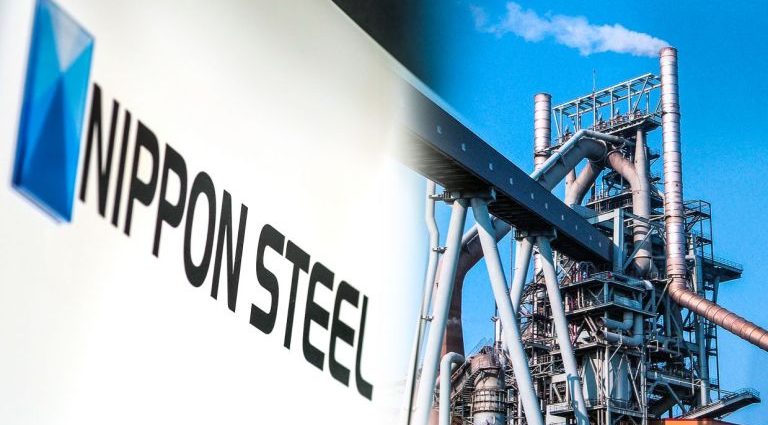Nippon Steel and ArcelorMittal, two of the world’s largest steel companies, have turned their attention to India and Thailand amid weakening demand in Japan and the energy crisis in Europe.
The ArcelorMittal Nippon Steel India joint venture (AM/NS India) has announced two new initiatives to expand operations in India:
- New construction and capacity expansion of upstream and hot-rolling facilities at the Hazira integrated steel mill in Gujarat.
- The purchase of port, electric power and other assets from the Essar Group, an Indian conglomerate.
ArcelorMittal is the world’s second-largest producer of steel. Headquartered in Luxembourg, it was created in 2006 by the acquisition of European steel maker Arcelor by India’s Mittal Steel.
Nippon Steel is Japan’s largest and the world’s fourth-largest steel maker. The world’s largest, third-largest and fifth-largest steel makers are Chinese. The sixth largest is South Korea’s POSCO. Incidentally, the largest American steel producer, Nucor, ranks 15th.
Owned 60% by Arcelor Mittal and 40% by Nippon Steel, AM/NS India is the fifth largest producer of crude steel in India. It was established in December 2019 through the acquisition of Essar Steel India. Now the related infrastructure assets are being acquired.
Expansion in India offsets ArcelorMittal’s troubles in Europe, where it plans to shut down a blast furnace in Bremen and a plant in Hamburg due to high energy prices and weak demand.
It also offers a significant growth opportunity for Nippon Steel, which faces a shrinking domestic market. Steel production in Japan has been on a downtrend since 2014.
Steel demand in India, on the other hand, is expected to remain on a growth track well into the next decade – supported by the growth of the population and economy, the government’s “Make in India” industrialization program and the country’s growing allure as an alternative investment destination amid decoupling from China.
In April, the World Steel Association forecast that steel demand in India (as measured in metric tons) would increase by 7.5% in 2022 – compared with just 0.4% globally. Recent economic trends suggest that figure may not be achieved but still India is still likely to remain the strongest global market.
New facilities to be built at the Hazira mill include:
- two blast furnaces, two sintering facilities and three coke furnaces for ironmaking;
- three basic oxygen furnaces and two continuous casting machines for steelmaking; and
- one hot strip mill.
Crude steel production capacity at Hazira should increase from about 9 million tons in 2021 (actual production was 7.4 million tons) to 15 million tons per year by mid-2026 at a cost of about 410 billion rupees (US$5 billion). High-grade steel production for the auto industry will be a priority.
Infrastructure assets to be acquired from Essar, at a cost of approximately $2.4 billion (200 billion rupees), include:
- port facilities in Gujarat, Odisha and Andhra Pradesh and;
- power generation and transmission facilities serving the Hazira mill.
AM/NS India is aiming for smooth transportation of raw materials and steel products among manufacturing sites located in west, east and south India, and for export; a stable and low-cost supply of electric power; operating cost reductions after making improvements to the acquired facilities; and the development of infrastructure for future expansion.

Looking out to 2030 and beyond, AM/NS India is considering the construction of a new steelworks on the east coast of India that could double its total capacity to 30 million tons per year.
Last April, Nippon Steel completed the purchase of majority stakes in G Steel and G J Steel, two electric furnace steel makers in Thailand with a combined production capacity of just over three million tons per annum. The transaction was valued at about $477 million.
As noted by Nippon Steel investor relations, G Steel and G J Steel are “the only integrated flat steel producers and two of the largest Thai companies producing crude steel and hot-rolled steel sheets in Thailand.”
Nippon Steel already had downstream mills in Thailand supplied by Japan. These mills, which serve the local steel, appliance and other industries, can henceforth be supplied locally.
The purpose of the acquisitions was to enable Nippon Steel to:
- Become “an insider as a local integrated steel mill in Thailand,” capturing local demand from the auto, appliance and other user industries;
- Enter the market without changing the supply-demand balance;
- Expand integrated steel production capacity in overseas markets where demand is growing (while it shrinks in Japan); and
- Advance toward its target of 100 million tons of crude steel capacity per annum through expansion in India and the acquisition of local integrated steel mills in Asia.
Nippon Steel’s total crude steel production capacity is currently about 66 million tons per annum. Adding six million tons from the expansion of AM/NS India just announced and 15 more from the steelworks in eastern India that are under consideration raises that capacity to 87 million tons.
Considering the possibility of other acquisitions, 100 million tons is an aggressive but not impossible target.
These figures amount to the sum of the full crude steel production capacity of companies included in World Steel Association statistics in which Nippon Steel has 30% or more equity ownership and equity method affiliates in which its ownership is less than 30% and to which it provides semi-finished products.
Aside from quantifying Nippon Steel’s ambitions, they also help put the future of Asian steel in perspective. In the company’s estimation, steel demand is likely to increase by 75% in India and 79% in ASEAN in the years from 2019 to 2030.
Over the same period, it is likely to decline by 21% in China, where the industry is being rationalized following huge over-expansion. The projected increases in India and ASEAN amount to 72% of the projected decline in China.

China is likely to remain the world’s largest steel-producing country by a wide margin, but the most attractive investment opportunities (at least for non-Chinese companies) are now elsewhere.

Follow this writer on Twitter: @ScottFo83517667

